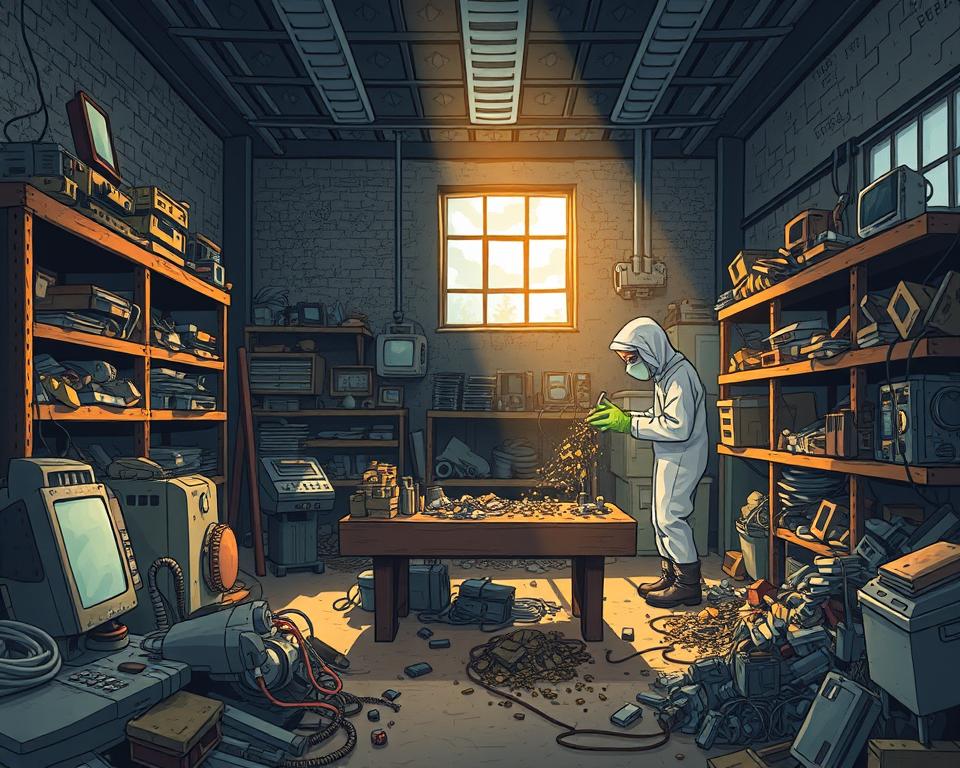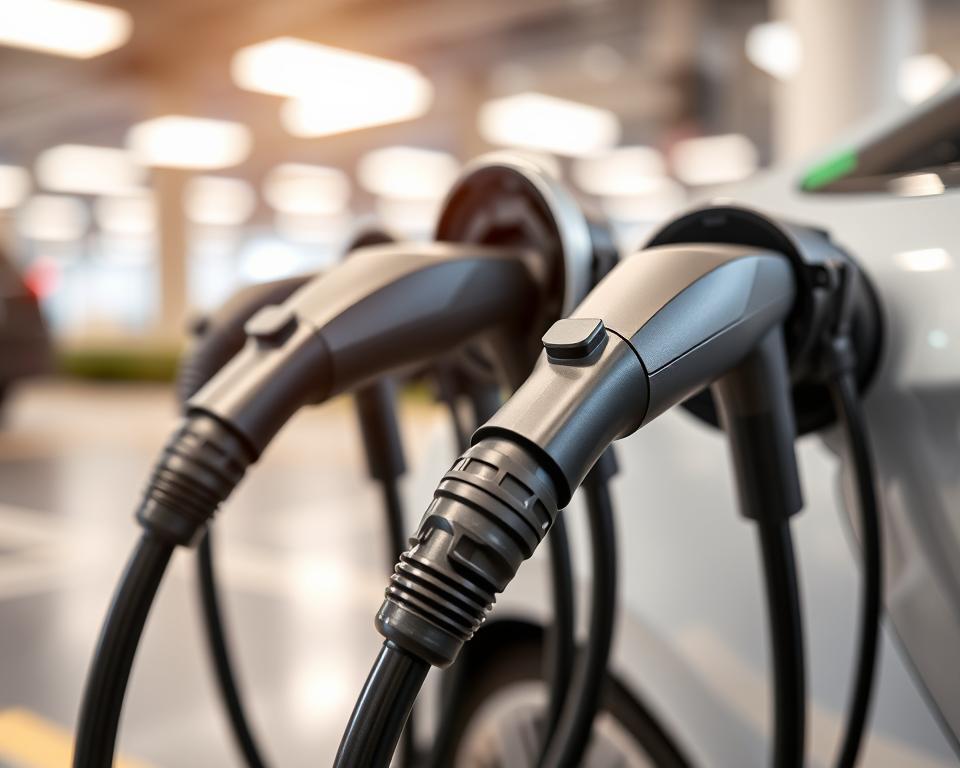Precious Metal Recovery: A Green Guide
More than $60 billion in precious metals end up in e-waste every year—did you realize that? That eye-opening statistic shows how important recycling these metals really is. It’s not just good for our economy but also for the environment. When we recover gold, silver, platinum, and palladium, we reduce pollution and conserve resources.
Companies like Dongsheng Metal Trading are leading the charge towards sustainability. They ensure these valuable metals are reused, not dumped in landfills. That precious metal recycling strategy underpins green recycling and long-term sustainability.
Central Ideas
- More than $60 billion of precious metals end up in e-waste each year.
- Precious metal recycling reduces environmental impact and conserves resources.
- Valuable metals include gold, silver, platinum, and palladium.
- Eco-friendly recycling practices are vital for sustainable development.
- Firms such as Dongsheng Metal Trading focus on precious metal recovery.
Understanding Precious Metals and Their Value
Rare metallic elements known as precious metals attract both investors and manufacturers. Gold, silver, platinum, and palladium are prime examples, known for their unique properties. They offer conductivity, resist corrosion, and occur in limited supply. The extraction and processing of these metals require considerable resources, underscoring the importance of recycling precious metals.

Market demand and each metal’s properties drive its value. Metal recycling ensures the supply chain remains robust. It cuts the environmental toll of mining operations. Through exhaustive recycling processes, these metals can be restored to their original state. This preserves finite resources while yielding economic benefits.
Defining Precious Metals
These metals’ special traits lend themselves to diverse applications. Their rarity and intrinsic properties are foundational to their economic significance. Key examples include:
- Gold: Valued for its beauty and resistance to tarnish.
- Silver: Celebrated for its adaptability and conductivity.
- Platinum: Renowned for strength and catalytic uses.
- Palladium: Gaining traction in cars and electronics.
Reasons to Recycle Precious Metals
The practice of recycling precious metals has emerged as a vital component for sustainability. It helps conserve these finite resources and significantly reduces the ecological footprint tied to traditional mining. Key benefits include:
- Reduction of environmental degradation caused by mining operations.
- Energy needs are far lower than mining virgin ore.
- Feeding materials back into the production loop.
- Economic upside from extracting high-value resources.
The Importance of Precious Metal Recycling
Recycling precious metals offers substantial environmental and economic benefits. Highlighting these advantages is key to reducing our ecological footprint. Additionally, it fuels market growth and resilience.
Green Benefits
Recycling metals yields major environmental perks. Retrieving metals from scrap and electronics reduces landfill load. This reduces the need for new mining, conserving natural resources.
This approach minimizes the harmful effects of mining, such as habitat destruction and pollution. By prioritizing recycling, we work toward a greener tomorrow.
Economic Benefits
The economic benefits of recycling are equally compelling. Using reclaimed metals trims manufacturing budgets. That shift enables firms to opt for recycled rather than virgin metals.
It produces recycling-sector employment and strengthens markets with growing recycled-metal needs. Harnessing these gains helps firms improve their bottom line. They also contribute to a greener economy.
The Precious Metal Recycling Process
Recovering precious metals involves multiple steps for peak efficiency. First, scrap electronics, jewelry, and industrial waste are gathered. Next comes sorting, cleaning, and testing to assess metal content and worth.
Recovery Steps
This systematic approach is vital for effective metal recovery. All stages focus on boosting metal yield. Sorting separates metals by type and purity. Cleaning removes contaminants that could hinder recovery. Testing measures metal content to select proper recycling methods.
Recovery Methods
Cutting-edge processes boost precious-metal recovery. Thermal reduction, using high temperatures to separate metals from ores, is a key method. Melting refines and aggregates metals, while wet chemical processes are used for delicate separations. Recyclers like Dongsheng Metal Trading employ these approaches to improve yields and returns.
Types of Precious Metals that can be Recycled
Recycling is vital for the environment and for recovering valuable materials. Numerous precious metals lend themselves to recycling, serving both business and environment. Awareness of recyclable metals guides consumers and companies.
Gold, Silver, and Platinum
Gold, silver, and platinum stand out among precious metals. They’re found in jewelry, coins, and industrial uses. Gold recovery is widespread because of its worth and need. Silver’s role in cameras, electronics, and solar energy makes its recycling vital.
Platinum, while rarer, finds value in catalytic converters.
Rare Metals in Electronics
Electronic precious metals offer unique recycling chances. Gadgets—from phones to laptops—house palladium, indium, and more. These metals are a treasure trove for recycling, reducing e-waste and providing essential materials.
It’s crucial to recover these electronic metals. Sectors strive to cut waste and boost recycling efficiency.
Industry Benefits of Precious Metal Recovery
Precious metal recycling is essential for several key industries, allowing them to use valuable resources efficiently and sustainably. The electronics industry, with its frequent use of precious metals in devices, benefits greatly. Aerospace and healthcare rely on them for vital parts. Examining industry recovery uncovers eco- and economic advantages.
Tech Electronics
The electronics industry leads in precious metal recycling due to the abundance of valuable metals in devices like smartphones and computers. Quick device turnover spawns more electronic scrap. Hence, recovering metals like gold, silver, and palladium is crucial. It preserves nature and lowers mining-driven CO₂ emissions.
Businesses enhance recovery to align with green and zero-waste aims. Such a move upholds efforts to conserve and protect.
Aerospace & Medical
Recycling precious metals matters for aerospace and healthcare, given their reliance on them. High-performance alloys are essential for manufacturing flight parts and medical devices due to their durability and resistance to corrosion. Metal recovery slashes expenses and ensures eco-compliance.
These sectors know green recovery eases resource shortages. It also enhances operational efficiency, making recycling a key strategy for sustainability.
Finding Precious Metal Recycling Companies
Finding trustworthy precious metal recycling companies is key to recycling effectively. Be sure to quiz them on their methods. Pricing models and processes make a big difference. Service comparisons help you pick the best recycler.
What to Ask a Recycler
- What certifications do you hold regarding precious metal recovery?
- How do you process various precious metals?
- What are your recovery rates for various precious metals?
- How do you handle pricing, and what additional fees might apply?
- Can you provide references or testimonials from previous clients?
Evaluating Offers
When searching for a recycler, it’s vital to compare different companies based on their services. Use a table to line up these factors:
| Company Name | Recovery Rate (%) | Processing Fee ($) | Turnaround Time (Days) |
|---|---|---|---|
| Recycling Co. A | 95 | 50 | 7 |
| Recycling Co. B | 90 | 45 | 5 |
| Recycling Co. C | 92 | 55 | 10 |
By comparing recycling services, you can find the best recycler for your needs. That way, you maximize returns and maintain quality.
Precious Metal Recycling: Your Eco-Friendly Guide
Knowing recycler operations matters if you recycle metals. They handle all stages, from gathering to final refining. Such management secures peak resource use and profit.
Behind the Scenes of Recycling
They apply high-tech processes—testing, sorting, refining—to recover metals. They start by collecting metal scraps from various sources. Then, they use sophisticated techniques to separate different metals. Next, they refine these metals to extract precious elements like gold, silver, and platinum.
This process not only maximizes resource recovery but also supports eco-friendly practices. It’s essential for long-term sustainability.
Finding Your Perfect Recycling Partner
You’ll want to weigh several factors in your choice. First, look at their environmental practices. Now more than ever, green commitment is crucial. Next, review their service range—from pickup to refining.
Cost is equally important. Request estimates from multiple firms. Experts like Dongsheng Metal Trading provide industry-specific offerings. They remain a trusted partner for targeted recovery.
Pick the Right Facility
Recovery facilities are central to green waste solutions. There are specialized centers for different metals and materials. Knowing the facility landscape helps you connect with the right partner. This benefits both businesses and the environment.
Recycling Center Types
Facilities differ greatly in their focus and processes. Certain centers specialize in high-value metals; others take general scrap. Here are a few common types:
- General scrap yards handle both ferrous and non-ferrous materials.
- Specialized firms recover gold, silver, and platinum with advanced refining.
- E-Waste Recycling Centers: Specialize in recovering metals from discarded electronics, capitalizing on the valuable components often found in these devices.
Choosing Facility Locations
Easy access to facilities boosts recovery efficiency. Companies should evaluate haulage considerations. Here are some factors that influence access:
| Factor | Description |
|---|---|
| Distance | Closer sites cut shipping costs and delays. |
| Partnerships | Strong ties with local centers streamline recovery. |
| Services Offered | Knowing each facility’s offerings guides your choice. |
Ultimately, facility type and access shape recycling success.
Recovering Metals from E-Waste
Discarded electronics threaten the environment. Many e-waste items hold recoverable precious metals. This highlights the importance of seeing e-waste as a valuable resource.
Metals in Devices
Gadgets harbor small quantities of precious metals. These metals are found in various parts:
- Circuit boards
- Connectors and ports
- Capacitors and resistors
- Battery terminals
From phones to TVs, electronics pack precious metals. By recycling, we retrieve and reuse these valuable elements.
E-Waste Recovery Benefits
Recycling electronics protects nature and recovers resources. It reduces landfill waste and saves natural resources. Key perks include:
- It lowers pollution risks tied to discarded electronics
- It reduces CO₂ output via green recycling methods
- It fuels a circular economy by feeding materials back into manufacturing
Promoting e-waste recovery advances resource stewardship. It lays the groundwork for a greener future.
Future Trends in Metal Recovery
Recycling is changing fast thanks to new tech and eco-driven demand. As the need to conserve resources grows, major players in recycling are adapting. Adopting fresh techniques, they’re shaping tomorrow’s recycling.
Eco-Friendly Recycling Innovations
Modern green recycling strives to cut waste and eco-damage. Firms now use bio-packaging and low-energy methods. That evolution supports global green targets and fosters industry responsibility.
Innovations in Precious Metal Recovery
Advances in recovery techniques are key to improving precious metal recycling efficiency. Robotic sorting and chemical extraction raise recovery. These innovations not only increase resource extraction but also reduce environmental impact, marking a significant step forward in recycling precious metals.
How to Start Your Own Precious Metal Recycling Business
Starting a precious metal recycling business demands meticulous planning and a deep grasp of operational and market dynamics. Founders need a roadmap, regulatory know-how, and solid groundwork. Key tasks include market studies and pinpointing customer segments. Permits and regulatory clarity underpin ongoing success.
Business Setup Steps
Setting up a precious metal recycling venture requires several essential steps:
- Research the market to grasp demand and competition.
- Draft a strategy blueprint covering targets and methods.
- Invest in equipment tailored to your process needs.
- Raise startup funds through financing or investors.
- Secure regulatory approvals and certifications.
- Launch marketing to attract clientele.
Legal Considerations and Certifications
Grasping legal frameworks is essential for your recycling venture. Meeting environmental rules protects your operation and the planet. Must-know compliance points:
- Securing business certification from relevant authorities.
- Complying with local, state, and federal regulations on waste disposal and recycling.
- Ensuring all employees are trained on safety protocols and procedures.
In Summary
Recycling metals saves resources and boosts ecological well-being. It empowers all of us to reduce environmental harm from waste. The recovered metals reduce mining needs and boost the economy by creating jobs in recycling.
Beyond green gains, recycling yields financial perks. Working with Dongsheng Metal Trading guarantees green standards. That partnership bolsters circular models for recyclers and buyers alike.
Our path to sustainability relies on united metal recovery initiatives. Raising awareness fosters mindful use and eco stewardship. Embracing these steps helps today and protects tomorrow’s world.








